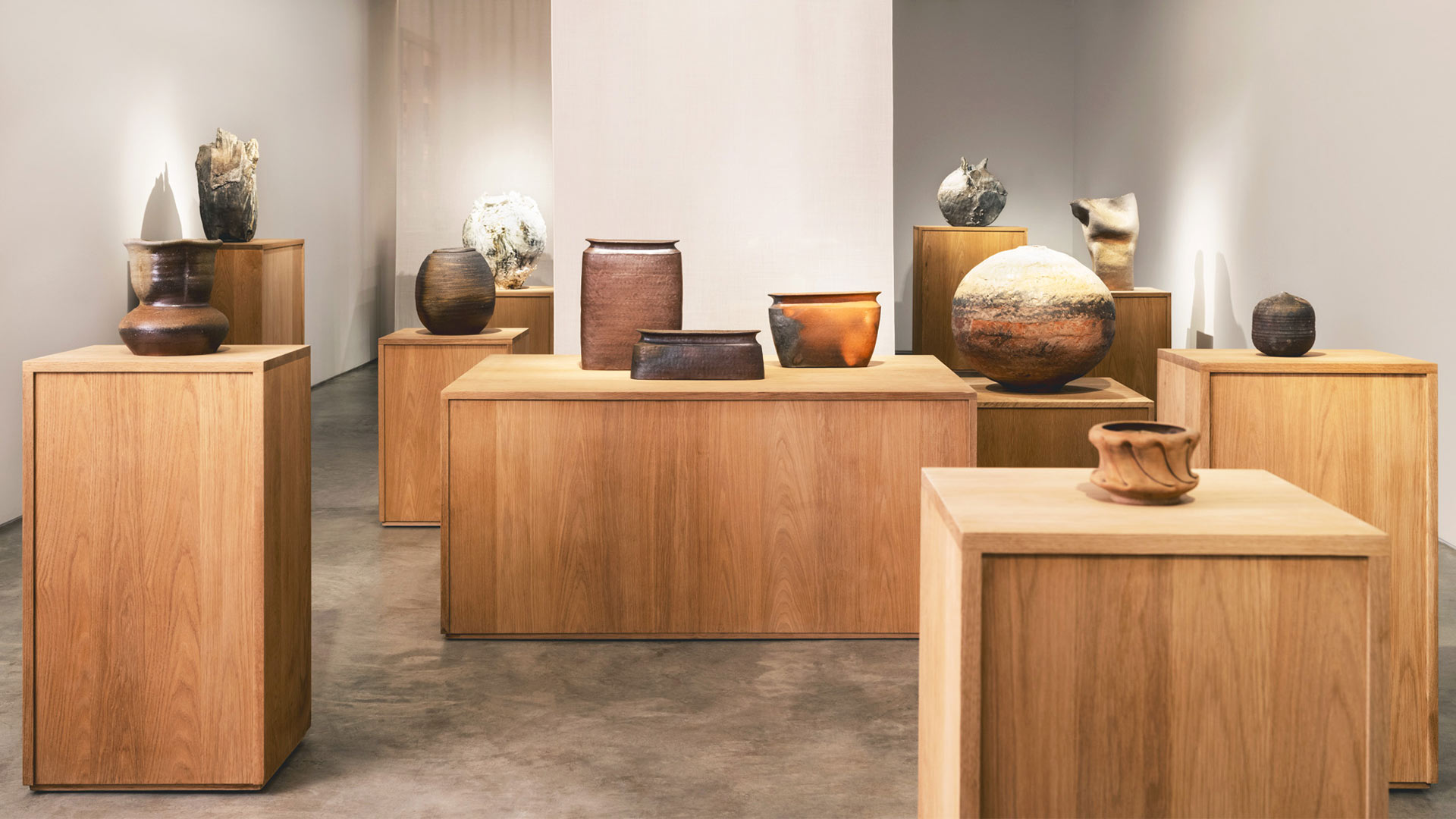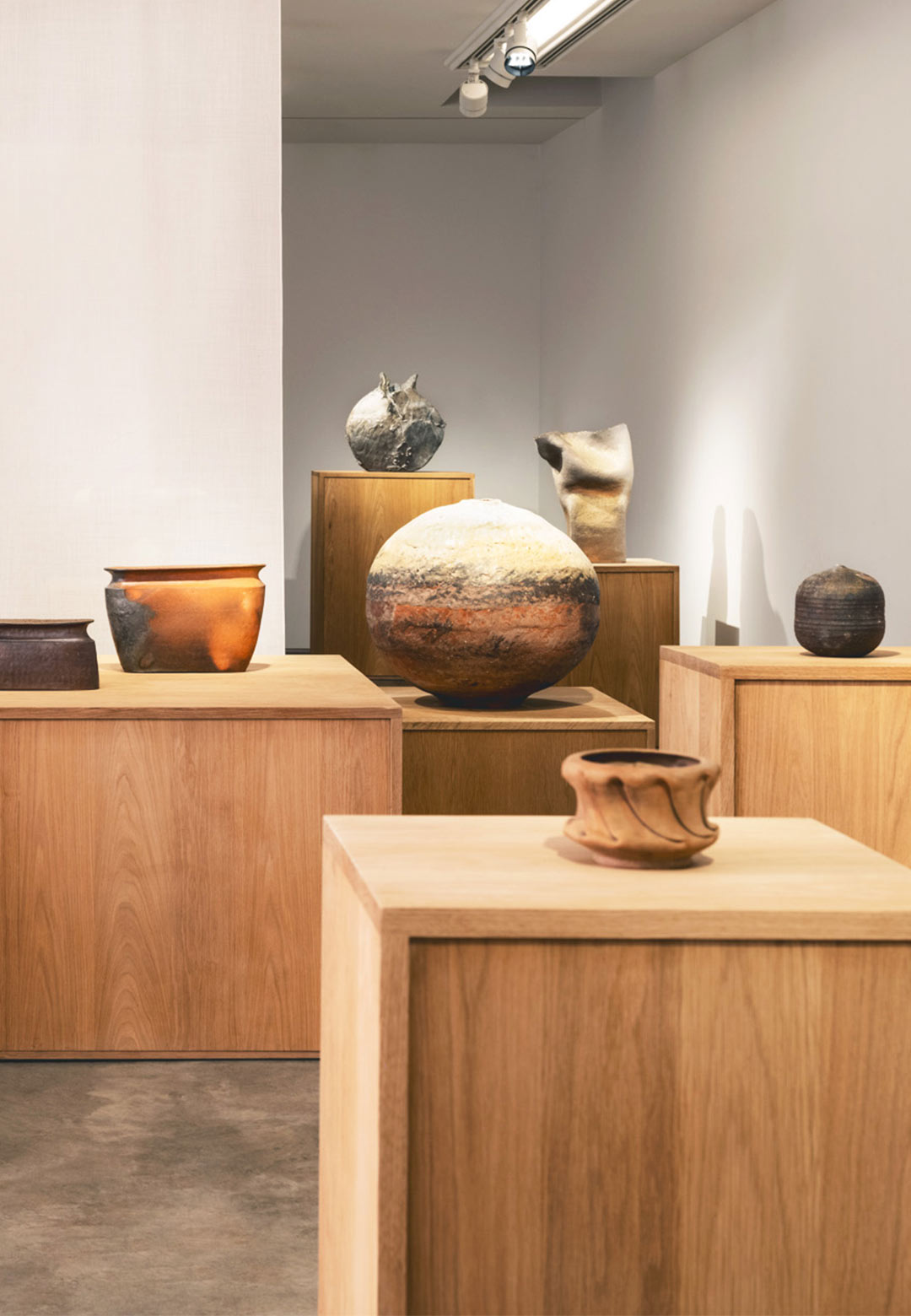Showcasing the influence of traditional Japanese techniques on modern-day ceramic artists and 21st-century studio ceramics, Guild Gallery unveiled the Earth and Accident group exhibition on November 2, 2023. Curated by Luke Syson, Director and Marlay Curator of the Fitzwilliam Museum at the University of Cambridge, the exhibition will remain on display until January 6, 2024. The presentation expands on Guild Gallery’s Frieze Masters 2023 debut, which examined how the British studio pottery movement influenced American and Japanese ceramicists of the 20th century. Earth and Accident is an extension of the gallery’s focus to include 21st-century practitioners from the United States, Japan, and Europe, this also marks the first time historic works have been showcased alongside contemporary pieces in New York.
The art exhibition blurs the lines between ceramic craft and fine art by showcasing ceramic art by some of the most renowned practitioners of 20th-century studio ceramics, including American potter George E. Ohr (1857-1918) and mid-century masters Peter Voulkos (1924-2002) and Toshiko Takaezu (1922-2011). Works by the next generation of ceramic artists who expanded on their innovations, including Peter Callas and Eisuke Morimoto; and their emerging successors Eisuke’s son Hitoshi Morimoto, Ludmilla Balkis, Casey Zablocki, and Akiko Hirai will also be on display, pushing studio ceramics into a revolutionary new territory today.
Elaborating on the art that can be moulded out of clay Syson explained, “By the end of the 19th century, the balanced pottery partnerships between humans and nature that had evolved over centuries had crumbled. The world was flooded with cheap China. The art of clay can explore the investigation and celebration of humans’ oneness with nature, of each person’s individuality, our beauties and our defects, our mistakes, our ugliness, our lives in which the arbitrary, the fortunate, and the inadvertent play crucial parts." Throughout the exhibition, variations in the natural colours and characteristics of clay turn these practical objects into artistic creations. "It is a strand of creation that has emanated with passionate clarity from a generous dialogue between potters working in Japan and Korea, those in some of the less metropolitan areas of the United States, and those who have adventurously travelled between them. Once again, the colours of different clays were celebrated, and the things that could happen to pots by happenstance in heat, the incalculable behaviours of ashes, slips, and glazes, all meant that a pot could once again feel as individual as the person making it, as particular as the moment it was made." Syson adds.
The unconventional vase designs created by American artist George E. Ohr, who anointed himself the ‘mad potter of Biloxi’, exemplify this method of turning ordinary clay into works of art. Ohr worked mostly with red clay that he hand-dug in Southern Mississippi. The slow-drying soil allowed Ohr to make his pots thin enough for him to ruffle and crimp into unglazed vessels with asymmetrical contours. Renowned for her circular and enclosed shapes, Toshiko Takaezu combines modernist elements with Zen Buddhist insights and traditional Japanese ceramic techniques. Through his use of abstract expressionism in ceramic sculpture, Peter Voulkos was influenced by peers such as Jasper Johns and Robert Rauschenberg.
The exhibition features works by various contemporary artists, all of whom have been greatly impacted by the work of their predecessors. In actuality, Peter Callas fired Peter Voulkos's later pieces in his distinctive Japanese-style anagama kiln. Eisuke Morimoto, a renowned potter, has passed down a 1,200-year-old way of making Bizen-ware to his son, Hitoshi Morimoto, another example of how Japanese traditions are kept forth. The unique colouring that the clay's natural properties provide is highlighted in both artists' work when it is fired at a high temperature for an extended period of time. The fervently textured Moon Jars by Akiko Hirai, an up-and-coming artist whose work celebrates chance and nature in the surface tension she draws between rough and refined, indelibly etched by the movement of her fingers, reveals the same elements in radically different ways. In addition to drawing inspiration from Japanese masters, Ludmilla Balkis's wavy, softly folded vessels can also be attributed to her background in textiles and George Ohr's vases, which feature twisted forms and thin bisque walls. On the other hand, Casey Zablocki's earthy, heavy wood-fired sculptures show the influence of both Voulkos and Callas, with whom he studied, but also bring a unique new depth owing to his use of local slip.
Earth and Accident, is an exhibition that bears witness to the infinite creativity present in the medium of clay, each artist on display has not only been influenced by the methods taught to them by their artistic predecessors but has also set out on a quest to develop a unique voice. In the close conversation between artist and medium, a deep investigation of the expressive potential inherent in clay reveals itself—a medium that functions as both the artist's canvas and an outlet through which their artistic visions are expressed.






 Sign in with email
Sign in with email










What do you think?